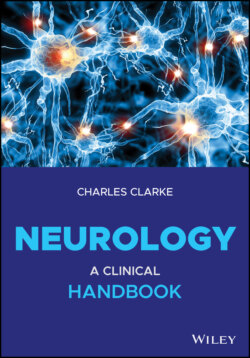Читать книгу Neurology - Charles H. Clarke - Страница 77
Neurological Disease with Pathogenic Autoantibodies
ОглавлениеMyasthenia gravis (MG), Guillain–Barré syndrome, Lambert–Eaton myasthenic syndrome (LEMS), some autoimmune encephalitides and probably stiff person syndromes are examples of B‐cell mediated diseases in which antibodies cause the clinical picture.
In MG, antibodies to the post‐synaptic acetylcholine receptor (AchR) cause a complement‐dependent disruption of the post‐synaptic neuromuscular junction and fatigable weakness. The unsolved question remains: what initiates anti‐AchR antibody production?
GBS: in the acute motor axonal neuropathy (AMAN) GBS variant, initiation of the antibody response is better understood. Some strains of Campylobacter jejuni have ganglioside‐like epitopes on their lipo‐oligosaccharide coat. Infection in individuals who have impaired self‐tolerance and in whom sufficient adjuvant stimulation exists, make antibodies to their own peripheral nerve gangliosides. These antibodies have complement‐dependent mechanisms that alter membrane characteristics at nodes of Ranvier and elsewhere, and thus damage both axons and myelin.
Similar mechanisms presumably exist in the common demyelinating Guillain–Barré syndrome.
Some CNS diseases also appear to be directly antibody mediated:
Antibodies form to the voltage‐gated potassium channel complex to two of its components: LGI1 and Caspr2. Antibodies to LGI1 cause a form of limbic encephalitis. Antibodies to Caspr2 produce Morvan’s syndrome – peripheral nerve hyperexcitability, psychiatric features and sleep disturbance.
Antibodies to N‐methyl‐D‐aspartate (NMDA) receptors cause an encephalitis, mainly in women, associated with antibodies against NR1 or NR2 NMDA subunits.
Antibodies to aquaporin‐4, the water channel protein, and possibly to myelin oligodendrocyte glycoprotein (MOG), are associated with Devic’s disease (Chapter 11).
